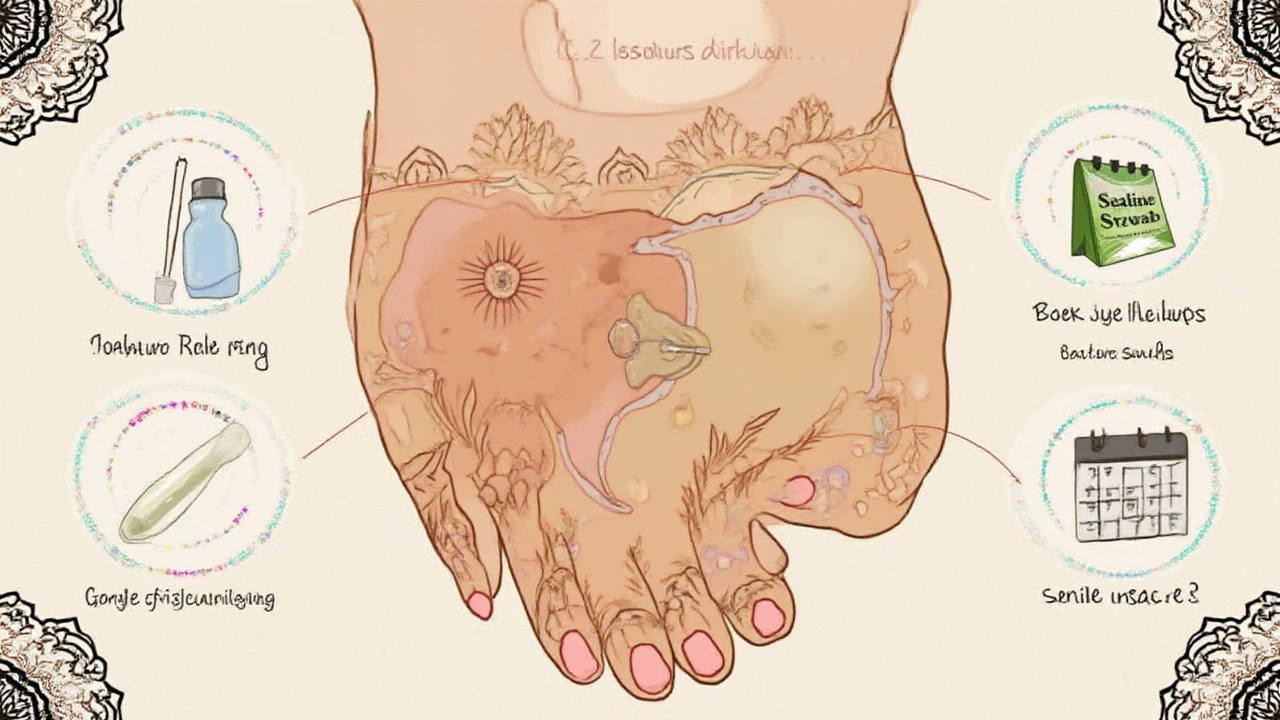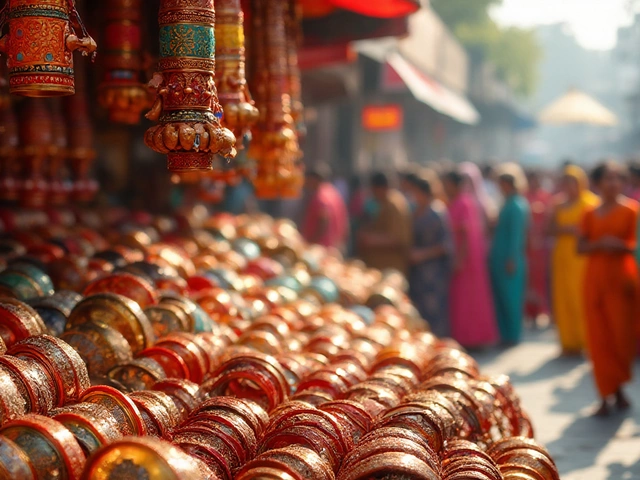Walk into any crowded market in Chennai, and you’ll spot nose piercings everywhere—sweeping from schoolgirls in starched uniforms to grandmas in silk sarees. But here’s something that baffles a lot of people: when someone gets their nose pierced, why do nearly every piercer, even those at popular parlours, insist you start off with a stud and not a ring? If you’ve ever wondered why you can’t just have that cute hoop from day one, you’re not alone. This isn’t just a style thing—there are reasons rooted in science, tradition, and even pure, hard-earned wisdom from people who’ve had their fair share of piercing mishaps. Let’s get to the bottom of this lingering question that’s stumped more than a few soon-to-be nose ring owners.
The Science Behind Nose Piercing: Healing Isn’t Instant
When you get your nose pierced, what you’re actually doing is creating a controlled wound in your body. Your skin, cartilage, and tissue don't just accept that invasion with open arms. Instead, they react—sometimes with swelling, sometimes with a little blood, and always with a complex healing process. Nose tissue is delicate, especially compared to, say, your ear lobes. The piercing needs stability to heal well and reduce risk of infection or ugly scars. That’s exactly why piercers stick with nose studs for your fresh piercing—they hold firmly in place, and, unlike rings, move around less. Movement is a big no-no right after piercing. Every little shift or spin can irritate the wound, delay healing, and make your body work overtime trying to fix what it thinks you’re repeatedly messing up.
It’s not just about comfort, either. The risk of infection is real. If you swap in a ring straight away, you might knock the jewelry around while sleeping, wearing a mask, or even scratching an itch. That’s all it takes for bacteria to sneak in. In Chennai’s humid climate, infections from sweat or dust are way more common than you think. Studies in dermatology journals have shown higher rates of piercing complications when people opt for jewelry that isn’t snug and stable.
Okay, so how long does this healing really take? For most people, a nose piercing takes anywhere from four to six months to heal completely. Some piercers say you could get away with switching in as little as eight weeks, but that’s risky business. Everyone betrays their impatience here, and who can blame them? But, seriously, cartilage piercings—like your nostril—are notorious for taking longer. Any shortcut, and you’ll wake up to redness, throbbing, or even pus. None of these are fun, obviously. So when the piercer hands you a tiny stud and groans if you ask for a ring, they’re not being old-fashioned—they’re saving you months of annoyance.
Risks of Jumping to a Nose Ring Too Soon
It’s not just tradition or piercer’s stubbornness—jumping too soon to a nose ring comes with some real dangers. The main issues? Infection, migration, hypertrophic scarring, and prolonged pain. Let’s break these down, one by one.
First up, infections. Nose rings, especially hoops or captive bead rings that aren’t super snug, spin around a lot. This motion pulls at the skin and cartilage, sometimes reopening the healing wound. Worse, it lets bacteria glide right in. If you live in a city (which most of us do), you’re probably exposed to enough dust and environmental grime already. Adding a wound in a high-risk area isn’t the best idea. Infections aren’t just a little red spot—they can lead to swelling so bad you’ll need antibiotics, or even force you to remove the jewelry altogether.
Migration is another sneaky culprit. Because rings are shaped differently, they tend to move the hole around as your nose heals. Ever seen someone with a piercing that isn’t straight, or sits oddly on their nose? That’s probably due to early ring use. Suddenly your dream of a symmetrical look is gone. Hypertrophic scarring—those small, raised bumps that can appear around the piercing—happens way more often if the tissue is stressed or continually moved. Trust me, those bumps are stubborn, sometimes outlasting the piercing itself!
And here’s something many overlook: sleeping. Pillows, blankets, even your hand during an unconscious midnight scratch, can snag a ring. That pain you feel? That’s your piercing getting tugged, which slows healing and can even cause the jewelry to tear right through if you’re unlucky enough. That happened to a friend of mine once—we spent one Saturday morning in an emergency room because she’d switched to a ring too early for a friend’s wedding. Fashion crisis turned medical mess.
Lastly, let’s talk about pain. Rings can feel less comfortable for a new fistula (that’s the technical term for the newly formed passage in your skin and cartilage). Studs, especially flat-back ones, stay put, giving your body a chance to rebuild around the piercing. Racing to a ring just means more throbbing, swelling, and soreness far longer than necessary.

How Piercers Safeguard Your Healing Process
Wondering why reputable piercers are sticklers for aftercare protocols? There’s a science to it—and practical wisdom passed down over generations. First, piercers choose hypoallergenic metals, usually surgical steel, titanium, or high-quality 14K gold. That shiny gem isn’t just about looks. These metals reduce your risk of allergic reactions (nickel is a common culprit), so choosing what goes into your fresh piercing is step one towards an easy healing process.
The real star of the show is the straight stud. Its design means less shifting, less irritation, and snug closure. A nose stud usually comes with a flat or small ball back—not too tight to squeeze your nose, but not so loose it wobbles. Ankita, my wife, got her own nose piercing last year. Her piercer insisted on a basic titanium stud, no exceptions. Was she annoyed? You bet. But her healing was smooth, unlike our mutual friend who swapped to a hoop within three weeks and spent the next two months fighting off bumps and redness.
Professional piercers will also educate you about keeping your piercing clean. This means saline solution soaks—nothing else, not fancy creams or herbal concoctions. You’ll be told to avoid makeup around the piercing, and no swimming for the first few months (pool water is almost guaranteed to bring on an infection). Trust, you’ll want to skip the ocean dip on your next Goa trip, as tempting as it might be, just to keep that healing on track.
One thing pros swear by: don’t twist or turn your jewelry. The old-school belief that you should spin your stud or ring “to keep the hole open” is the exact opposite of what modern science says. That movement interrupts the delicate new skin forming inside. It’s like picking at a scab—it’ll never heal right. There’s also advice about being gentle when blowing your nose (better believe that can hurt), and avoiding sleeping directly on the pierced side. Every little bit helps.
Tips and Timelines: When You Can Actually Switch to a Nose Ring
So, when is the golden moment you can swap out that sturdy stud for your dream nose ring? The safest bet is to wait at least four to six months, though for some people it can take even longer. If you notice any lingering redness, tenderness, or discharge, best to give it a bit more time. Imagine it’s like baking a cake—take it out too early and it just collapses! This healing time isn’t a one-size-fits-all deal; everyone’s body is different.
Here’s a simple step-by-step if you’re itching to change your stud for a ring:
- Make sure your piercing hasn’t hurt or shown any signs of trouble for at least a couple of weeks.
- Wash your hands thoroughly before you touch the piercing.
- Have your new jewelry ready—opt for a seamless ring or a captive bead ring made from hypoallergenic material.
- Clean the area with a saline solution before attempting a swap.
- If you’re even a little unsure or feel resistance, go back to your piercer for the change. They’ll do it safely.
Quick tip from someone who lives in super-humid Chennai: keep your face clean and sweat-free as much as possible, especially when the city feels like a steam room. Even after months, your new ring can get irritated with trapped sweat or pollution. Carry a tiny saline spray in your bag—it helps after a long bus ride in city traffic.
By the way, you don't have to settle for a boring stud in the meantime. There are plenty of cute options out there—gems, colored stones, subtle designs. As long as it’s hypoallergenic and designed for fresh piercings, you can have a bit of fun with your look while you wait out the healing time.
If your piercing suddenly starts acting up after you switch to a ring — more redness, swelling, or oozing — don’t ignore it. Pop the ring out and put the stud back in. Sometimes your body just needs a bit more time to adjust. And don’t hesitate to swing by a professional for advice. A good piercer would rather see you back with a concern than have you end up in a hospital bed.
Once you understand the logic behind the wait—how a nose stud keeps your piercing stable, fights off infection, and gives your body a fair shot at healing—settling for that initial boring jewelry feels a lot smarter. That said, the freedom to switch things up will come soon enough. Until then, wear that nose stud like a badge of honour; you’re making sure your piercing lasts, looks good, and doesn’t become a medical lesson for your friends and family.



